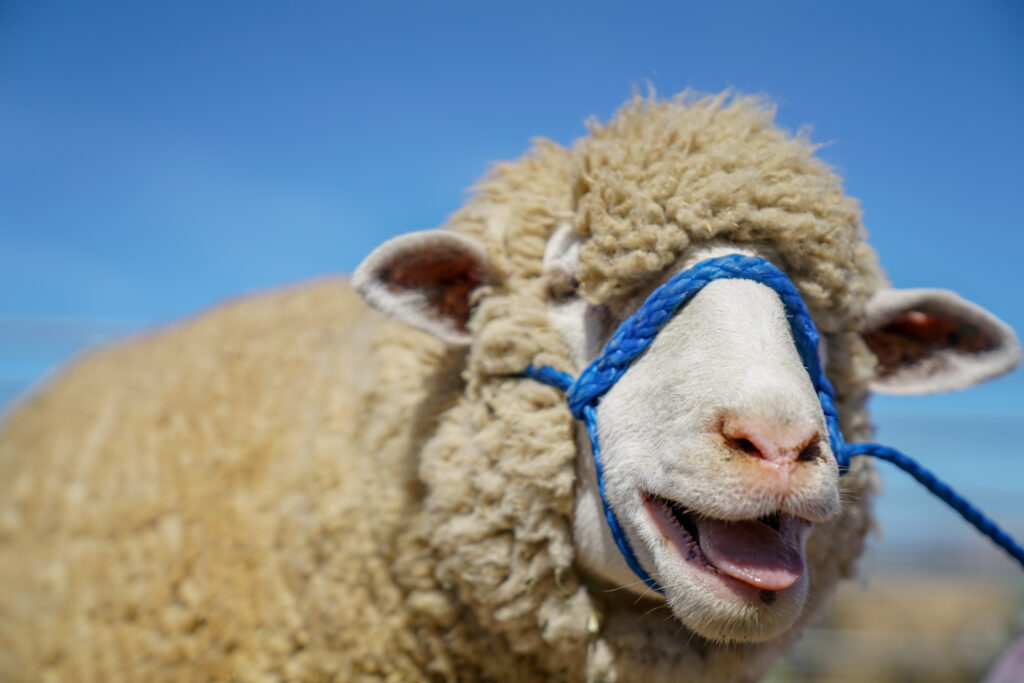
Natalamb the sheep is one of the animals at the Sheep Unit at the Pierce College Farm in Woodland Hills, Calif. Photo by: Adam Baron 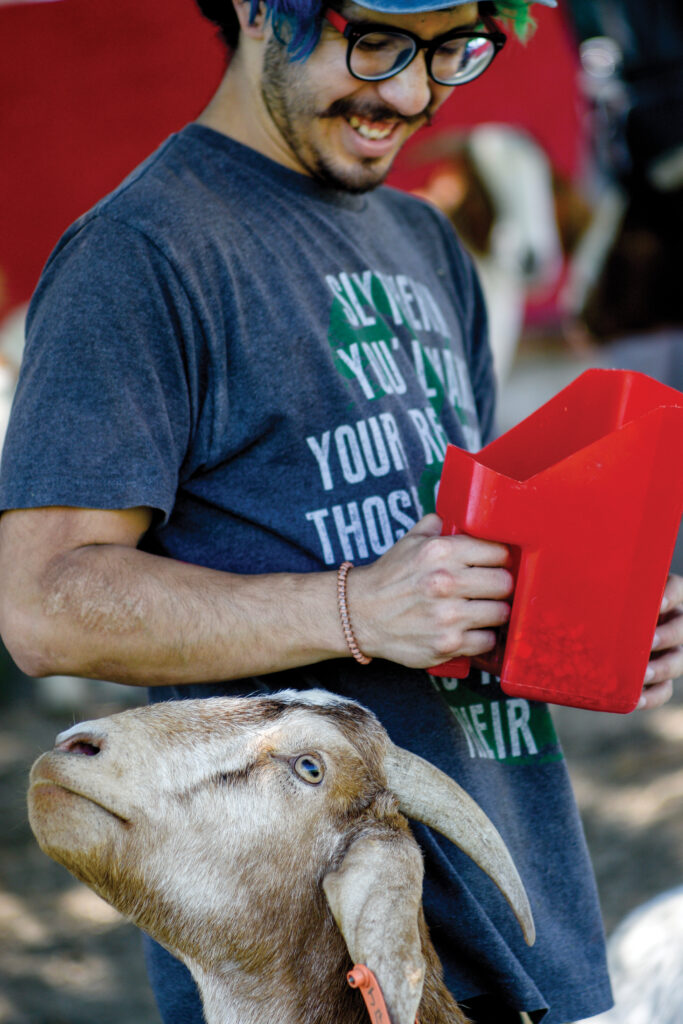
Julio Wong smiles as he feeds the goats at the Pierce College Farm in Woodland Hills, Calif., on April 23, 2020. Photo by: Chelsea Westman 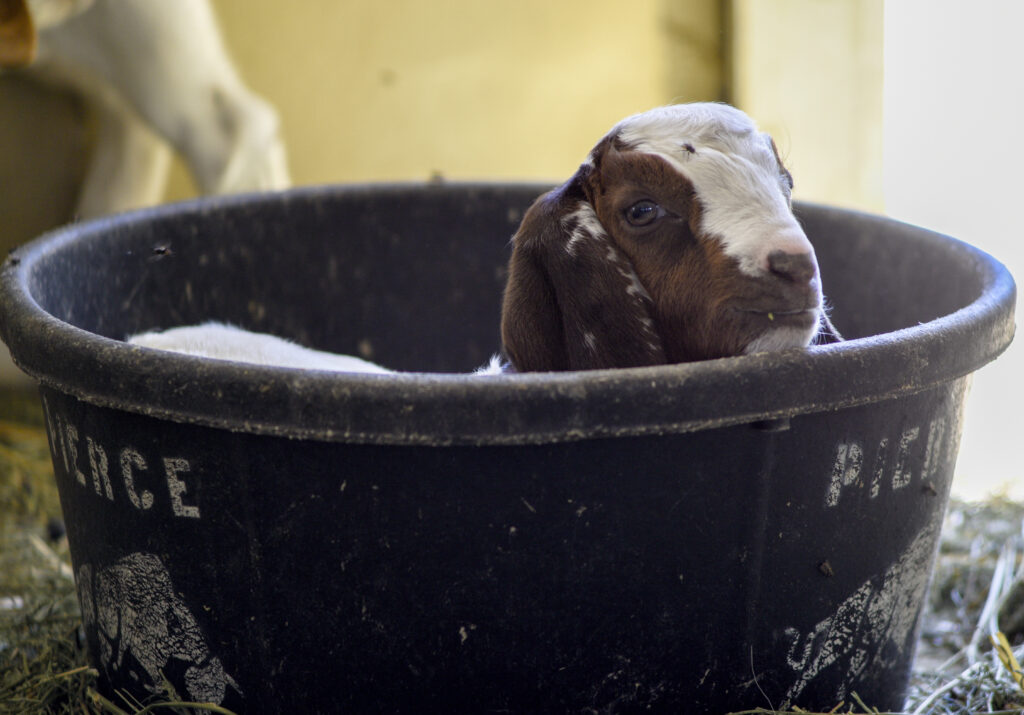
A baby goat sits in a bucket at the Pierce College Farm in Woodland Hills, Calif. Photo by: Chelsea Westman 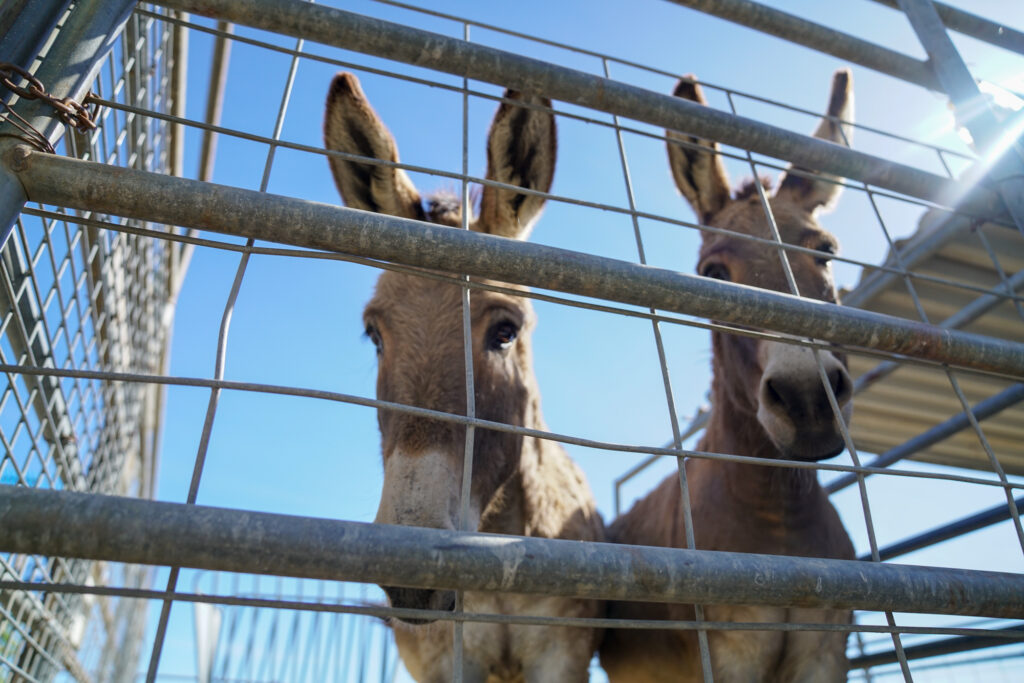
Two donkeys on the farm at Pierce College in Woodland Hills, Calif. Photo by: Adam Baron 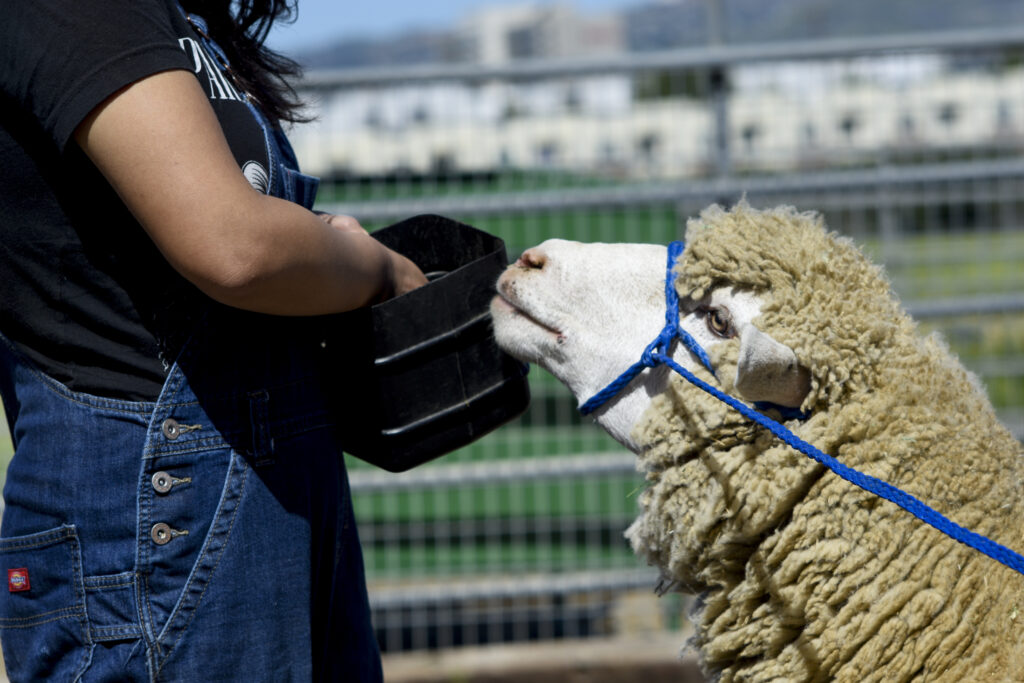
Chia Lee feeds Natalamb at the Pierce College Farm in Woodland Hills, Calif. Photo by: Chelsea Westman 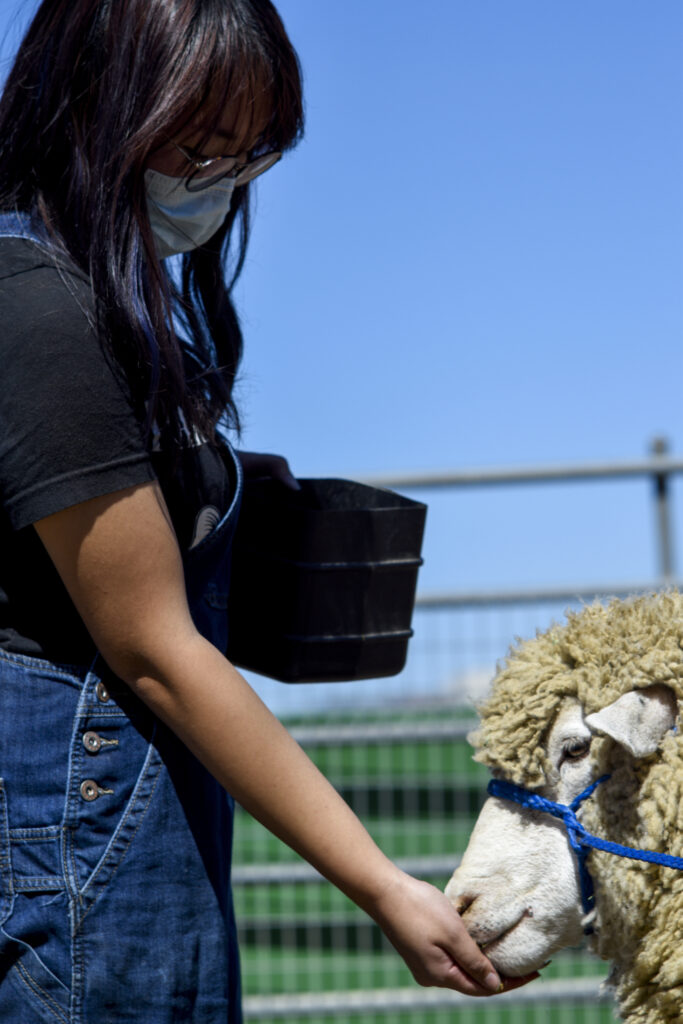
Chia Lee feeds Natalamb at the Pierce College Farm in Woodland Hills, Calif. Photo by: Chelsea Westman 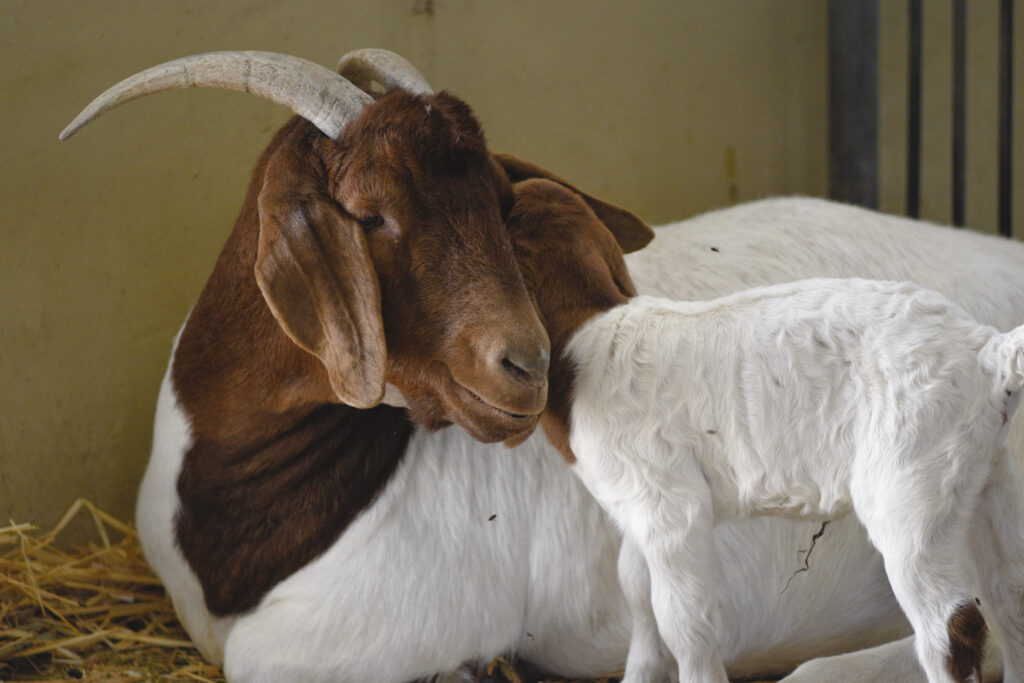
A mother goat with its baby at the Pierce College Farm in Woodland Hills, Calif. Photo by: Chelsea Westman 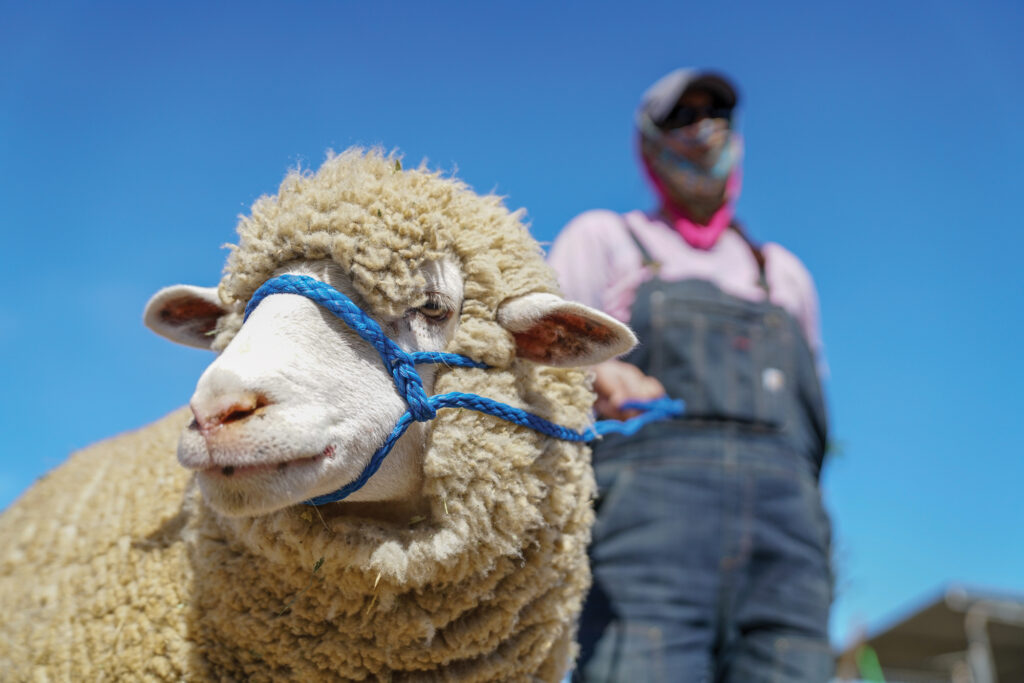
Natalie Albizo stands with Natalamb, the sheep she watches, at the Sheep Unit at Pierce College. Photo by: Adam Baron 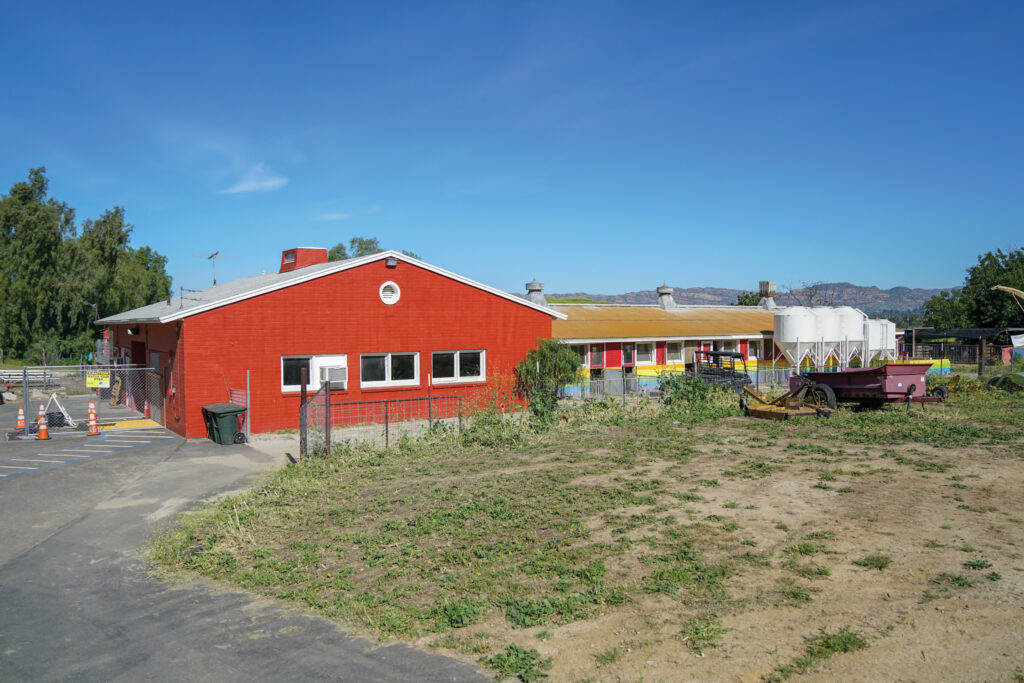
Part of the farm at Pierce College is emptier than usual during the COVID-19 pandemic. The school is closed and the only people allowed at the farm are animal caretakers. Photo by: Adam Baron 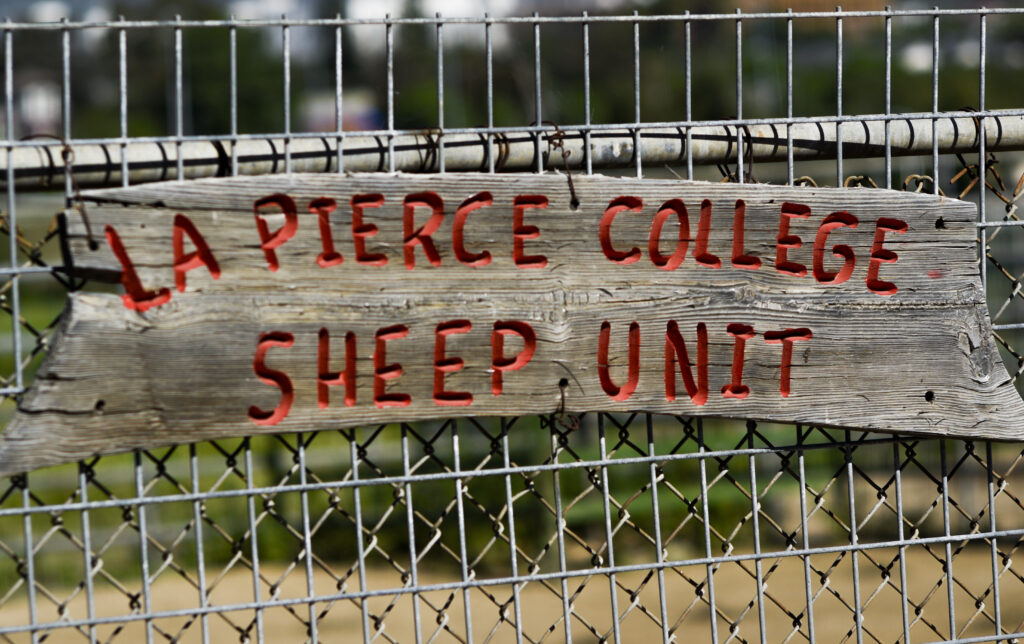
A sign of the Sheep Unit at the Pierce College Farm in Woodland Hills, Calif. Photo by: Chelsea Westman 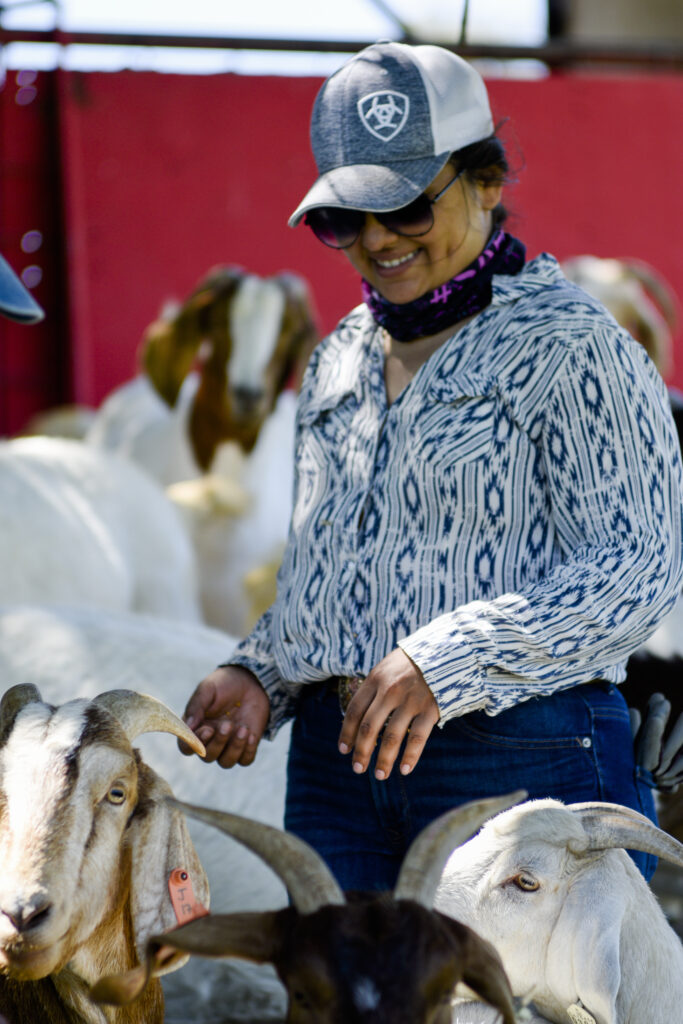
Janet Peńa, a student worker, tends to the goats at the Pierce College Farm in Woodland Hills, Calif. Photo by: Chelsea Westman 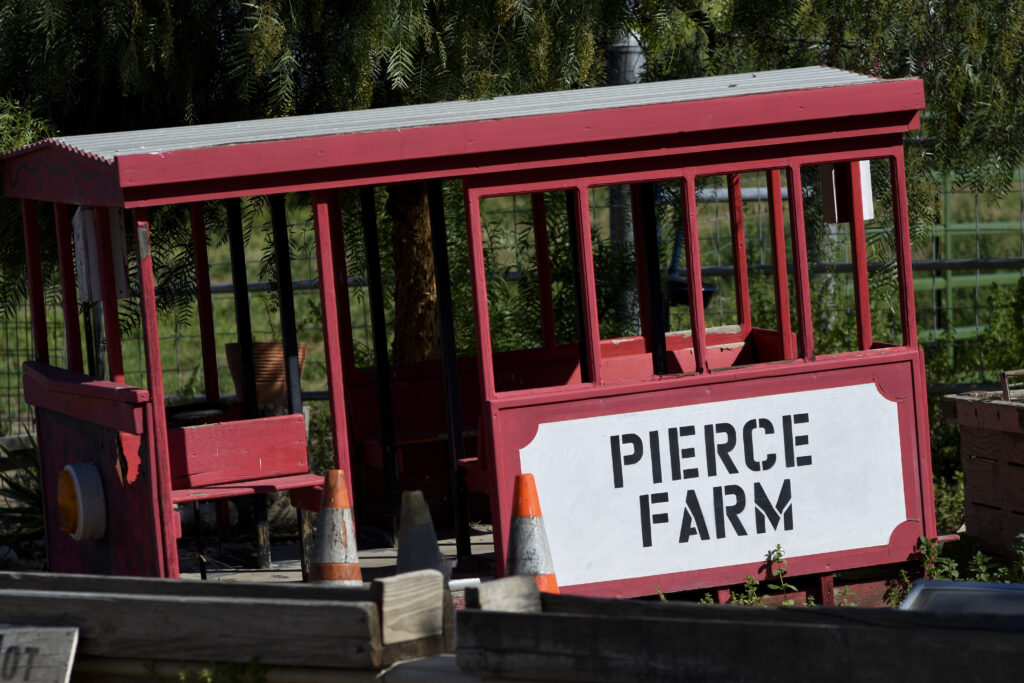
An old trolley with the Pierce Farm sign sits in the Sheep Unit at the Pierce College Farm in Woodland Hills, Calif. Photo by: Chelsea Westman 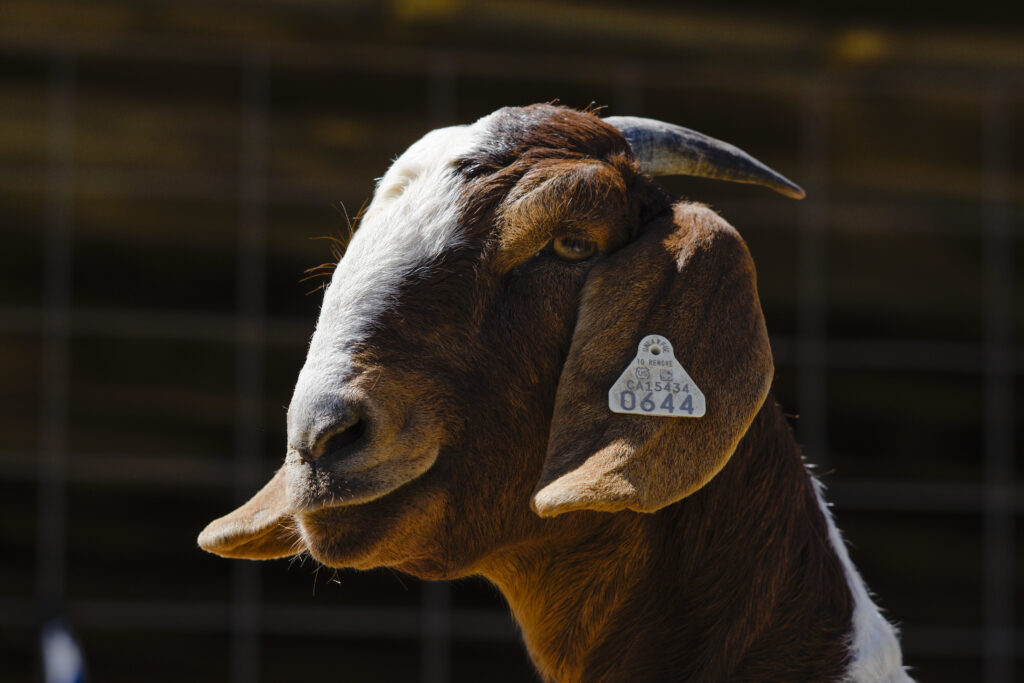
A goat stands in the sun at the Pierce College Farm in Woodland Hills, Calif. Photo by: Chelsea Westman 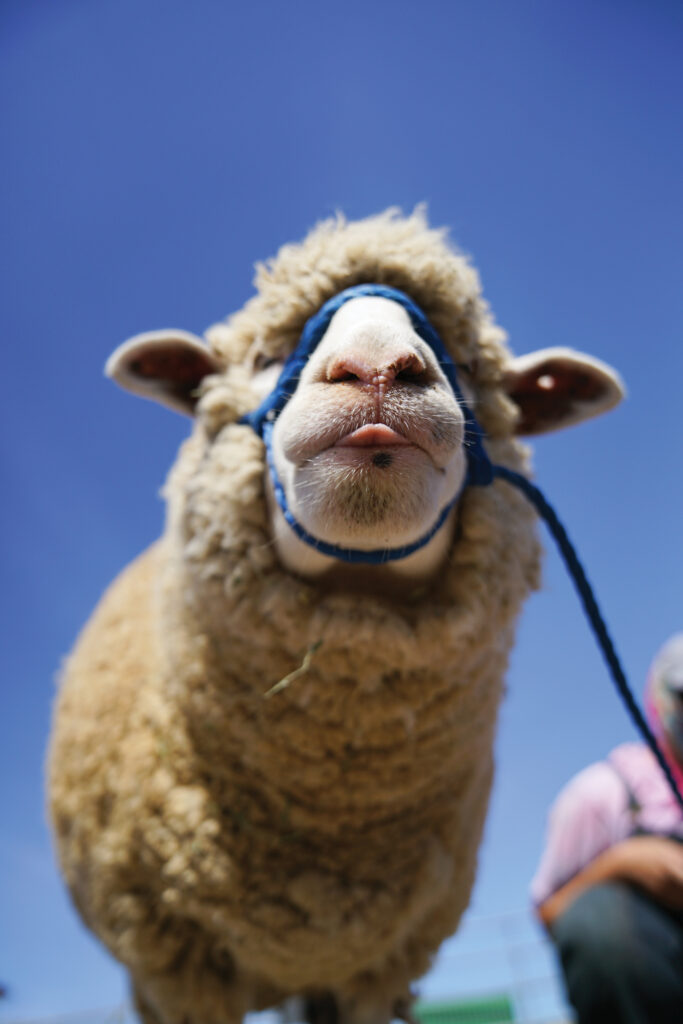
Natalamb sticks her tongue out at the Pierce College Farm in Woodland Hills, Calif. Photo by: Adam Baron 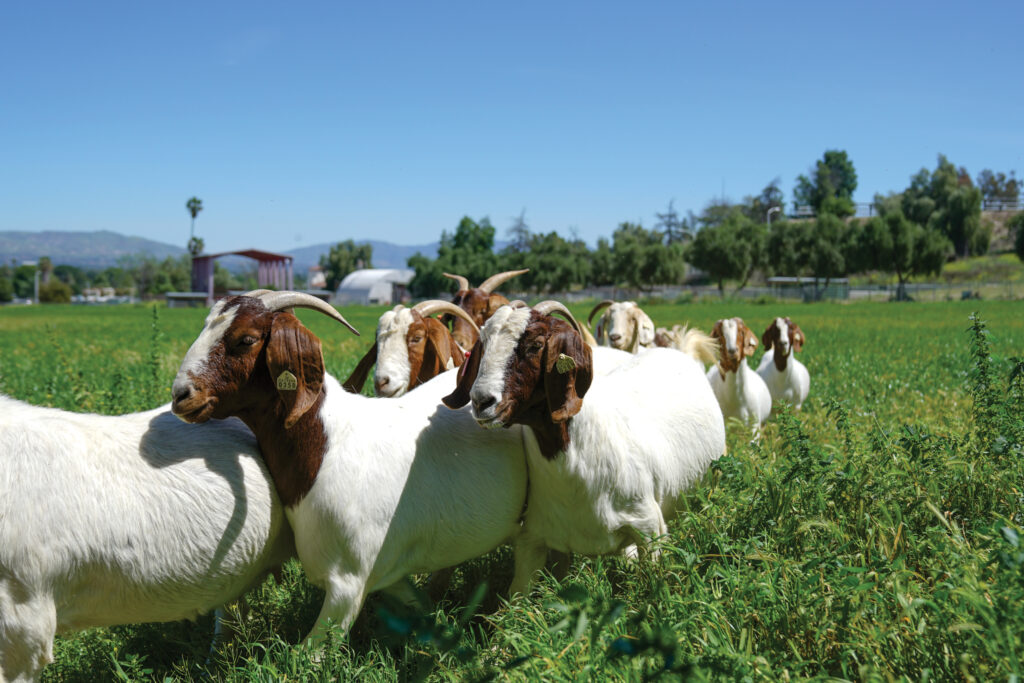
Goats roam the fields of the Pierce College Farm. Photo by: Adam Baron
The Pierce College Farm has been open despite campus being closed because of COVID-19.
The only people allowed on campus are essential workers, which includes the four full-time workers and five student workers on the farm. They care for 205 animals.
Agricultural technician Natalie Albizo said there were 596 students helping with the farm before the Safer at Home order.
“It’d be anywhere between four and eight students twice a day for two hours,” Albizo said. “They would come in and clean the waters, feed them and rake pens. Now that they’re not here, I do that myself with my student workers.”
Farm Manager Marcie Sakadjian said the farm animals have noticed the change in personnel.
“I think they missed the human interaction,” Sakadjian said. “Our animals are used to a bunch of students here. They like people because they know that people equals food, generally. So, they like being around people.”



